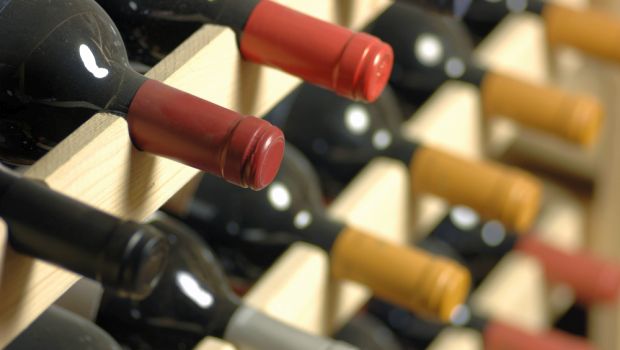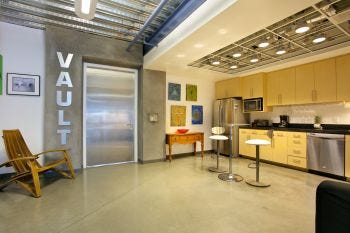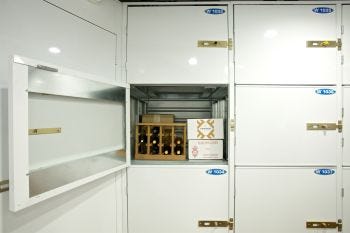If you’re looking for a way to liven up your self-storage business, attract an untapped customer base and create additional revenue, consider adding wine storage. But first, read these first-hand lessons learned by the management team at Pacific Highway Storage in San Diego.
April 12, 2017

If you’re looking for a way to liven up your self-storage business, attract an untapped customer base and create additional revenue, consider adding wine storage. The service can lend that extra “oomph” a facility needs to go from “plain Jane” to “fancy Nancy.”
The property I manage, Pacific Highway Storage in San Diego, was built in 2008-09. The owners decided wine storage would be an excellent addition, since we're close to the city’s affluent downtown area and surrounding neighborhoods.
The wine area was built as a large room, separated from our offices by an artistic wooden door. The individual units are metal boxes in varying sizes. The smallest will accommodate a 12-bottle case, the largest up to 340 bottles. Our unit measurements were based on the average 10-by-10-by-12-inch wine box.
Wine likes to be stored at 46 to 65 degrees. Anything higher ages the wine faster. Wine also likes darkness, proper humidity (nothing above 70 percent), air circulation and stillness. Our wine units are perfect for these conditions, designed with metal shelving, gaps at the top of the doors for air circulation, motion-sensor lighting and controlled air-conditioning. If you go into the room first thing in the morning after the door is shut all night, it's about 51 degrees. Perfection. It all sounds great, right?
 Well, it wasn’t—at least not always. In the beginning, we made some critical errors. I’ll share them with you here so you can benefit from our experience.
Well, it wasn’t—at least not always. In the beginning, we made some critical errors. I’ll share them with you here so you can benefit from our experience.
Learning the Hard Way
Imagine a very cold can of Coca-Cola. You put it on the table, and it immediately starts to form condensation on the outside, with water running onto the table top. Now imagine a cold room with no insulation in the ceiling or the walls. It abuts another storage area at the bottom floor of a two-story building. This was our wine room. Can you guess what happened?
Our upstairs tenants started complaining that the concrete floors in their units were wet. This was bad, since moisture leads to mold. It took a bit of detective work, but we discovered the wine-storage area was condensing. We immediately moved all the tenants who were impacted, gave them a free month of rent for the inconvenience, and hired a contractor to install insulation over the entire ceiling. Thankfully, that solved the problem.
A year or so later, the tenants of the storage units on the same floor as the wine room began complaining of mold. At the time, we were also beginning to experience huge swings in humidity in the wine room. That's bad for the bottles, as it negatively affects the corks and labels.
I called a mold-remediation specialist for his opinion. He told us the humidity and moisture from the wine room was seeping through the block walls. We would need to seal all the unit walls and fix the humidity problem.
Again, we moved all the affected tenants to new units. I had my maintenance supervisor measure the room, and we bought and installed a large dehumidifier, which drained all the collected moisture outside. We also sealed the concrete blocks with waterproof sealant, glued 1-inch foam insulation board to the walls, taped the seams, and used foam to cover any corners. Problem No. 2 was now solved.
Rebuilding the Business
 So now we were problem-free—except for our occupancy. Back in 2012, our wine-storage occupancy was 15 percent. Struggling to improve our rentals, we hired local wine consultant Eric Guy of True Wine Culture, who offered a lot of ideas. He began marketing to local sommeliers, hotels, restaurants and networking clubs, and rentals began to increase. He then suggested we host a wine reception every quarter and showcase local artists. Things improved, but they were still hit and miss.
So now we were problem-free—except for our occupancy. Back in 2012, our wine-storage occupancy was 15 percent. Struggling to improve our rentals, we hired local wine consultant Eric Guy of True Wine Culture, who offered a lot of ideas. He began marketing to local sommeliers, hotels, restaurants and networking clubs, and rentals began to increase. He then suggested we host a wine reception every quarter and showcase local artists. Things improved, but they were still hit and miss.
By the time I was promoted to the position of manager in spring 2014, our wine-storage occupancy was up to 35 percent. That’s not bad, but I thought we could do better. That said, I wasn't sure what to do. I liked wine, but I didn't know a Pinot Noir from a Barbarossa. I tried advertising in local publications, but that netted zero results. Guy finally recommended (and we agreed) that we be proactive about our pricing. We changed our website, and every prospective wine-storage customer was offered a deal. As we got more tenants, referrals started to bring in yet more business.
In addition to wine storage, we accept wine deliveries for tenants who belong to wine clubs or work in the wine business. The combination of all these things has pushed our wine-storage occupancy up to 96 percent! Now it's time for judicious rent increases.
Is it worth it to add wine storage to an existing facility or include it as part of your new build? Only you know your demographics. Take what we learned and see if wine storage would give your facility that extra “oomph.”
Kris Fetter is the operations manager for Pacific Highway Storage in San Diego. A California native, she served in the U.S. Navy and has worn many customer-service-related hats, including those of military police, vendor, dry-cleaner, security guard, administrative assistant and assistant teacher. She entered the self-storage industry four years ago. To reach her, e-mail [email protected]; visit www.selfstoragesd.com.
About the Author(s)
You May Also Like





